Travels to Tasmania in 2018 had me undertaking a ten day adventure through the Eastern Arthur Range in the World Heritage listed South-West National Park, a place of true wilderness.
From the range you are extremely far from anything, with wilderness in all directions as far as the eye can see. It’s quite astonishing in today’s age for any place, let alone a tiny island, to have so much inaccessibility, fresh air, and freedom. The Eastern Arthur Range to me is true wilderness – vast, untouched, difficult to access, and incredibly inspiring. I grew up close by with a poster of Federation Peak hanging up on my bedroom wall and for many years I told myself: “one day!” Tasmania is where my love of nature and the outdoors began. Now an adult, engaging with the wilderness through photography has been my way to appreciate it on a deeper level.
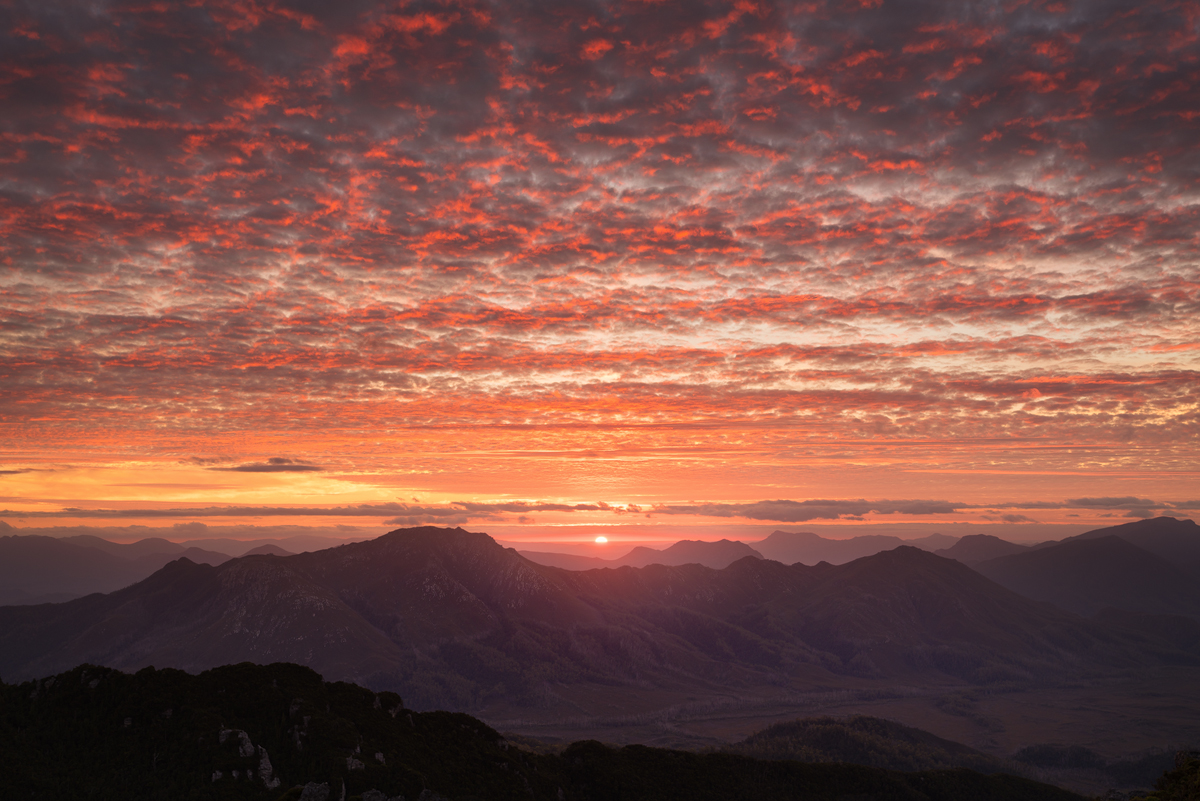
From day one on the trail I had plenty of time to contemplate, relax, reset, and adjust my body-clock from the ever-increasing pace of today’s world. I was disconnected, yet somehow I was more content, connected and self-aware than ever. Any worries or concerns were quickly put into perspective and forgotten about when watching a massive cloud bank consume the Eastern Arthurs at sunset – enveloping everything except Federation Peak – which is the central focus of the range; or when a wedge-tailed eagle circles you to within ten metres on The Devil’s Thumb – not once, but twice, enabling eye-contact and the taking of each other’s measure; or when marvelling at millions of stars reflected in Hanging Lake on a rare calm, clear night; and then when you encounter an elusive, endangered tiger quoll on the trail who appears completely unfazed by your presence. If you want stress relief I recommend you strap on a backpack and head into the South West wilderness. But be prepared – life is simplified, yet risks are amplified. Your daily challenges will include crossing rivers and negotiating quagmires of mud as well as trusting your life to protruding tree roots whose reliability is entirely questionable. This kind of adventure is character-building, but perhaps that is what is needed in this day and age when we are constantly encouraged to seek security and minimize risk.
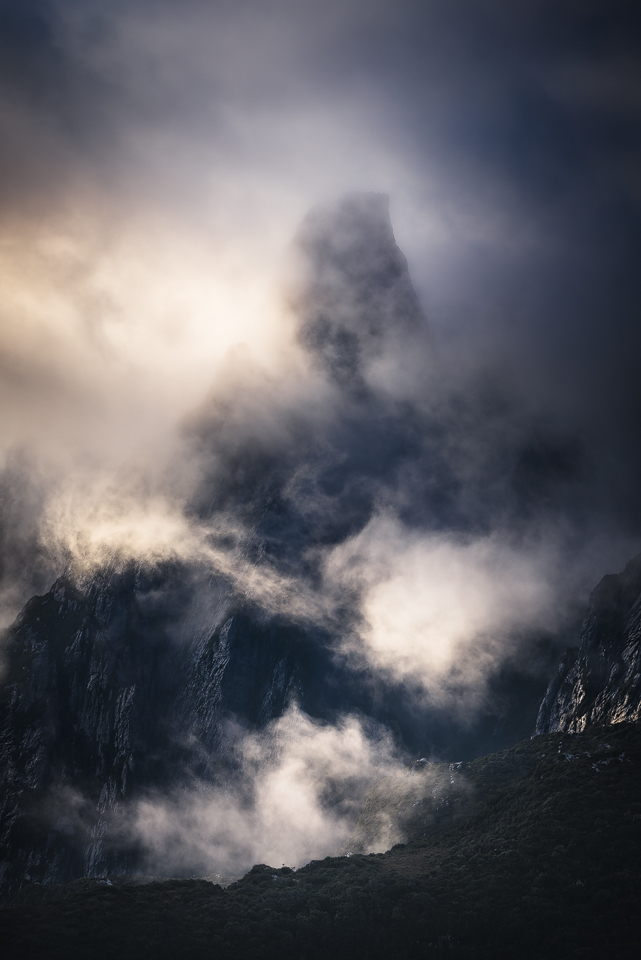
Federation Peak appears as an apparition set against the morning mist and fog, South-West National Park, Tasmania 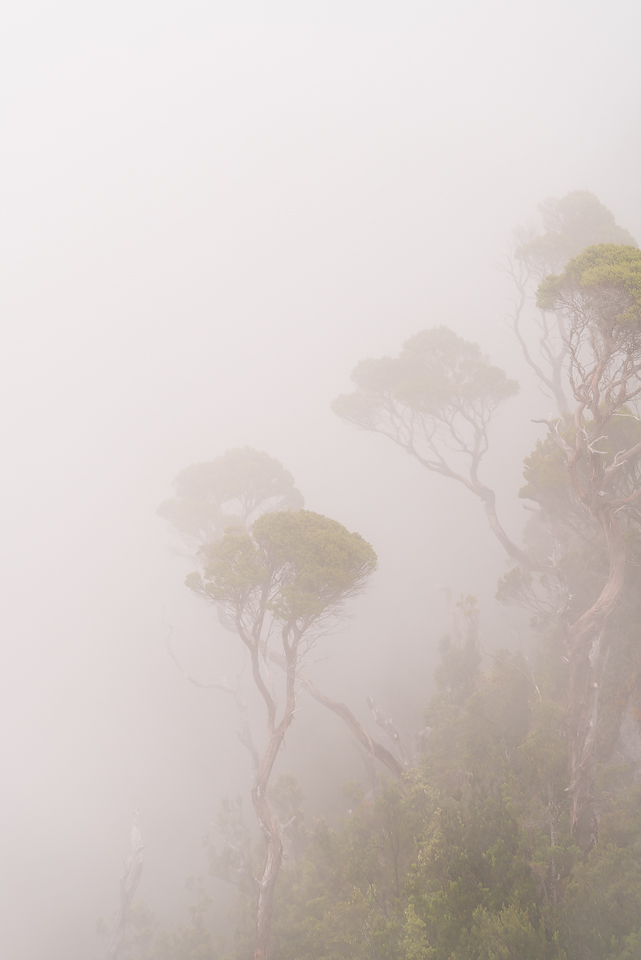
Eucalyptus trees cling to the cliffs on Moss Ridge, South-West National Park, Tasmania 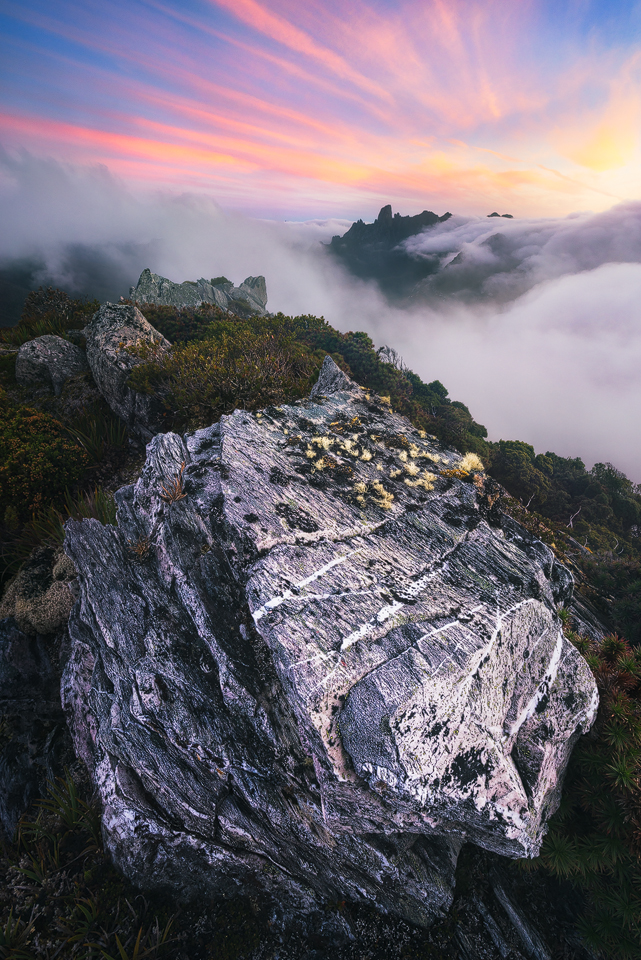
Federation Peak at sunset piercing through the fog bank viewed from the top of ‘The Dial’, South-West National Park, Tasmania
Sadly, the value of wilderness is not understood by the majority, and it is disappearing at a rapid rate across the world for short-term and short-sighted gains. Here in my birthplace, maintaining the integrity of the Tarkine in the North West is currently the hot topic and back home in the Canadian Rockies logging is controversially creeping into the nearby foothills. This time, on my return to Tasmania, I discover that a new track is being proposed through pristine forest to the shores of Lake Geeves, nestled right under the nose of Federation Peak, which would further encroach on (and surely diminish) the wilderness value of the World Heritage listed Eastern Arthur Range.
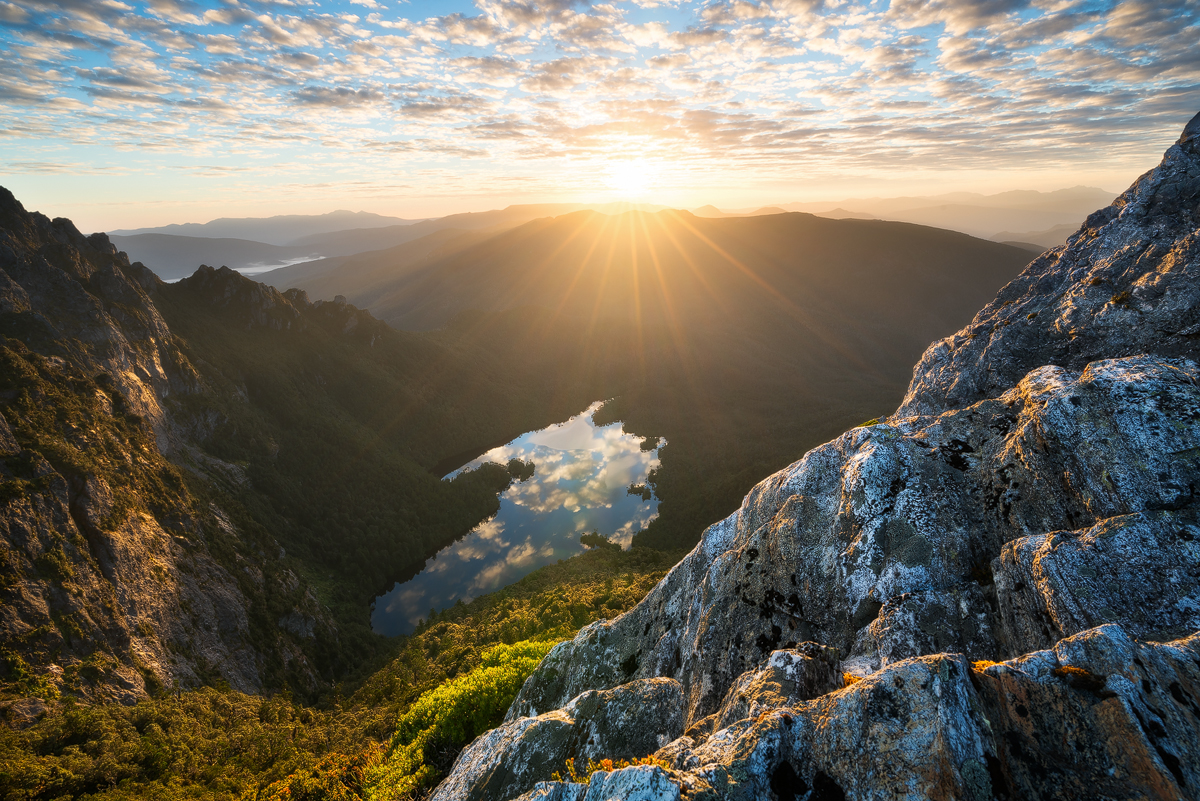
Wilderness is vitally important for the maintenance of ecological diversity. The unique structure, size, and maturity of old-growth forest in wilderness provides habitat for a wide range of organisms. Undisturbed wilderness maintains and sustains organisms ranging from the microscopic to large birds, mammals, and reptiles. Old trees die and fall, creating further niche habitats, while other organisms benefit from ground cover, grasses, mosses, and lichens. Of added biological and ecological benefit is the old-growth forest’s capacity to retain moisture. Old-growth forest is one of the few land features that produce topsoil instead of degrading or destroying it. Wilderness also has an important role in water and air purification cycles. Along with its ecological and conservation value, wilderness plays a significant role in mitigating the causes of climate change because it is identified as an important carbon sink whereby plants grab and store carbon dioxide from the atmosphere for photosynthesis. Current estimates suggest that globally, old-growth forests store nearly 300 billion tons of carbon in their living parts, or roughly 30 times the annual amount of emissions created by burning fossil fuels**. Knowing this it is unfathomable to me that these wild places are not given the respect they are due, so that they are protected and preserved for posterity.
Recently social media has been criticized for the popularization of many outdoor locations which have increased the desire to go there and take a selfie or to ‘do it for the gram’, resulting in increased track erosion and the degradation of the surrounding environment. Our increasing population and the relative ease with which we are able to travel the world today, along with increased access to information via the internet, is compounding the problem. If increasing popularity could lead to increased respect, protection, and preservation, through education and the understanding of the importance of wilderness, then we might be able to attain a healthy balance. The situation is dire for the remaining tracts of wilderness which are still not seen for their intrinsic value by governments, corporations, and the individual hell-bent on attention by increasing a social media following. Instead these havens are seen only for their potential yield, future profit, and personal gain. Surely these places should remain intact for future generations to appreciate and experience respectfully – should they choose to take up the challenge, accept the risk, and strap on that backpack. The experiencing of true wilderness is like nothing else, and it is an experience that can’t be manufactured. It will no longer be available to us, or to the generations to come, unless there is a change in the way we view, and move through, our wild places.
Returning to civilization I found that the trip had been incredibly beneficial as I had been able to reflect, re-align my priorities and way of thinking, even if ever-so-slightly, for the better. I had recharged. And, I had fulfilled my childhood dream of witnessing Federation Peak up close, closing one chapter but turning the page to open up yet another. “I wonder what the view is like from over there?” I thought as I looked across at Precipitous Bluff from the top of Federation Peak. The next time I return to Tasmania and the wilderness is calling that might just be where I end up surveying the vast ocean towards Antarctica from the top.
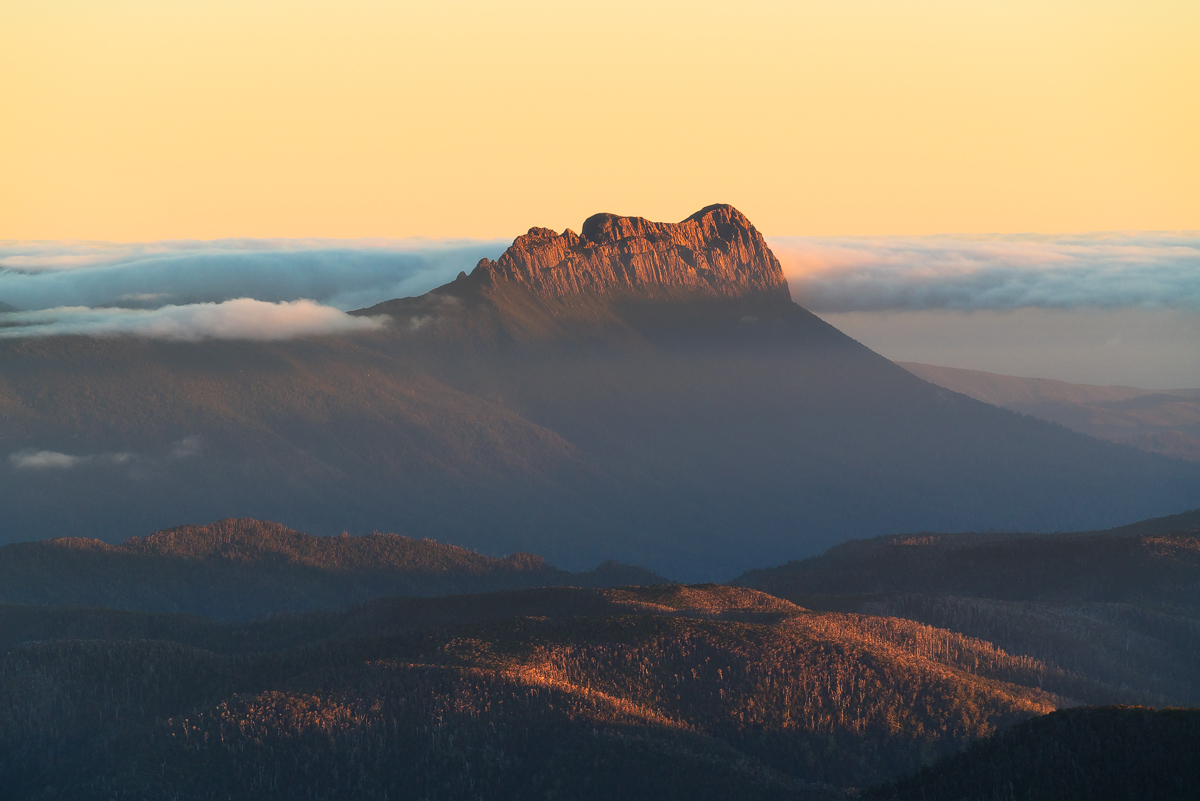
** ‘Future Directions – the Role of Old-Growth Forests in Carbon Sequestration’, by Geoffrey Craggs, JP, Research Analyst, Northern Australia and Land Care.
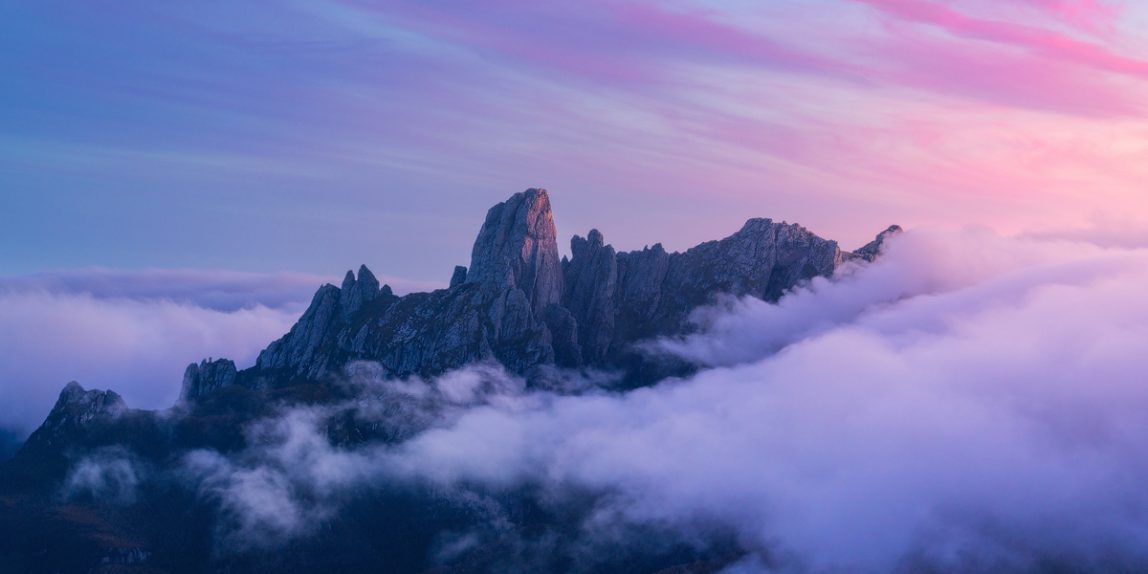
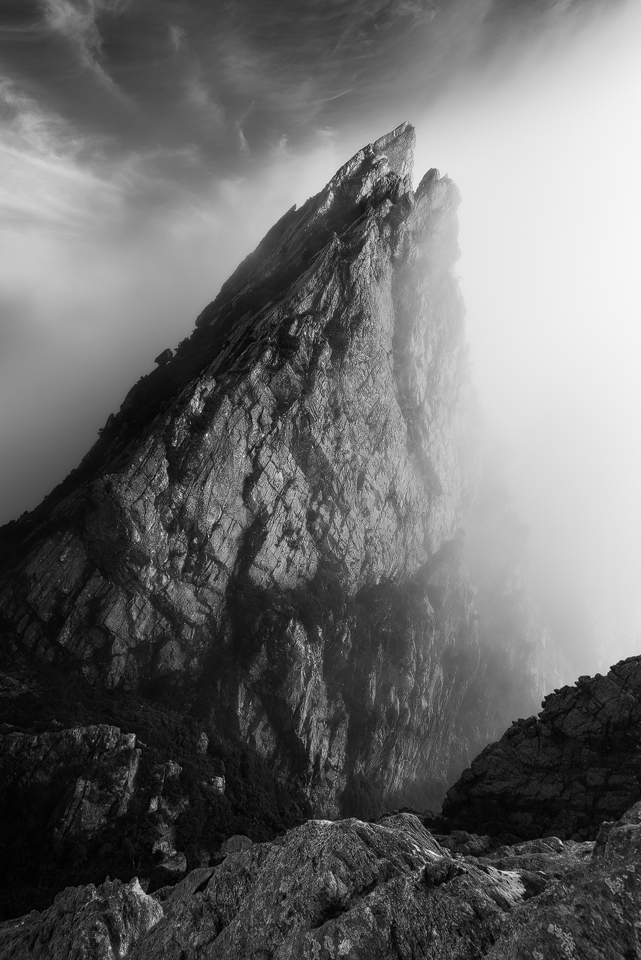


Hi, thanks for this very much. I am Tasmanian and have twice summited Fedder. and flown over it. and remain utterly in awe. First trip up and down Moss Ridge, the second in via Arthur Plains and Eastern Arthurs, then again out via Moss Ridge. Yet no one knows of the place, or almost. Ask most Tasmanians and you will get a blank stare. That is both good and bad news. Google Earth points to encroaching roads from around Farmhouse Creek – their beginnings were there some 45 years ago but now drill deeper in towards this piece of paradise. Can share more of this and many other places nearby if you were interested. kind regards. Ian
Hi Ian, thanks a lot for leaving a comment! Lucky you, blazing in and out of there twice. I’d love to go back. When I return to Tasmania I’ll be sure to get in touch and see what your recommendations might be. It’s sad that it might become more accessible because that is what elevated the experience for me.